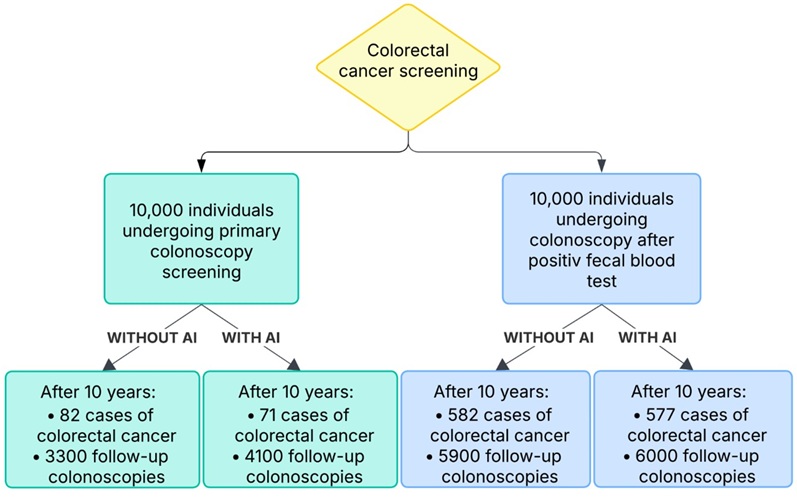"Ultra-Rapid" Testing in the OR Could Enable Accurate Removal of Brain Tumors
|
By HospiMedica International staff writers Posted on 26 Feb 2025 |

For many cancers, including brain tumors, the success of surgery and the prevention of cancer recurrence depend on removing as much of the tumor and surrounding cancerous cells as safely as possible. Surgeons, however, often lack information about the genetic mutations present in the tumors they are removing. Certain cancer types can be identified through specific mutations, which are changes in the DNA instructions of the abnormal cells. A technology that allows for the rapid and accurate quantification of mutations in the operating room could enable surgeons to tailor their approach based on the cancer's genetic profile, thereby improving the ability to remove tumor tissue more reliably. Researchers have now developed a groundbreaking technology capable of measuring mutation levels in tissues in just 15 minutes, paving the way for surgeries guided by genetic data and offering the potential for better patient outcomes. This tool for quickly identifying the genetic "fingerprints" of cancer cells could allow future surgeons to more precisely remove brain tumors while the patient is still in the operating room.
The study, led by researchers from NYU Langone Health (New York, NY, USA), presents the development of Ultra-Rapid droplet digital PCR (UR-ddPCR), which was found to measure the concentration of tumor cells in a tissue sample in only 15 minutes. The technology is capable of detecting as few as five cancer cells per square millimeter. According to the researchers, UR-ddPCR, at least in initial tests on brain tissue samples, is fast and accurate enough to be the first practical tool for detecting cancer cells in real-time during brain surgeries, directly using genetic mutations. To develop UR-ddPCR, the research team sought efficiencies in the steps of the standard droplet digital PCR (ddPCR) method. By reducing the DNA extraction time from 30 minutes to under five minutes, the team maintained compatibility with ddPCR. Further time savings were achieved by increasing the concentrations of chemicals used during testing, which shortened the time for some steps from two hours to under three minutes.
Additional efficiencies were realized by using pre-warmed reaction vessels for the two temperatures required by PCR, rather than repeatedly cycling the temperature of a single vessel. In the study, the researchers employed UR-ddPCR to measure the levels of two genetic mutations, IDH1 R132H and BRAF V600E, both commonly found in brain cancers. By combining UR-ddPCR with stimulated Raman histology—another technique the team developed earlier—the researchers could assess both the fraction and density of tumor cells within each tissue sample. The study, published in Cell Press Journal Med online, demonstrated that UR-ddPCR outperformed standard ddPCR in terms of processing speed. While standard ddPCR can accurately quantify tumor cells, it takes several hours to yield results, making it impractical for use during surgery.
With UR-ddPCR, surgeons could potentially determine the cancerous nature of cells and precisely quantify the number of cancer cells present in specific tissue areas, a level of accuracy previously unattainable. The study revealed that UR-ddPCR produced results consistent with both standard ddPCR and genetic sequencing across 75 tissue samples from 22 patients undergoing glioma tumor surgery at NYU Langone, a type of brain cancer. Results from UR-ddPCR were also verified against known cancer cell samples as well as non-cancerous samples. Although the tool has shown promising results, the researchers caution that broader use will require further refinement and clinical trials. The next step is to automate the UR-ddPCR process to simplify and speed up its application in the operating room. Clinical trials will also be necessary to evaluate patient outcomes when using this tool as compared to existing diagnostic methods. Additionally, the team plans to develop the technology to detect other genetic mutations commonly associated with various cancer types.
"Our study shows that Ultra-Rapid droplet digital PCR could be a fast and efficient tool for making a molecular diagnosis during surgery for brain cancer, and it has potential to also be used for cancers outside the brain," said study co-senior investigator Gilad Evrony, MD, PhD.
Latest Surgical Techniques News
- New Transcatheter Valve Found Safe and Effective for Treating Aortic Regurgitation
- Minimally Invasive Valve Repair Reduces Hospitalizations in Severe Tricuspid Regurgitation Patients
- Tiny Robotic Tools Powered by Magnetic Fields to Enable Minimally Invasive Brain Surgery
- Magnetic Tweezers Make Robotic Surgery Safer and More Precise
- AI-Powered Surgical Planning Tool Improves Pre-Op Planning
- Novel Sensing System Restores Missing Sense of Touch in Minimally Invasive Surgery
- Headset-Based AR Navigation System Improves EVD Placement
- Higher Electrode Density Improves Epilepsy Surgery by Pinpointing Where Seizures Begin
- Open-Source Tool Optimizes Placement of Visual Brain Implants
- Easy-To-Apply Gel Could Prevent Formation of Post-Surgical Abdominal Adhesions
- Groundbreaking Leadless Pacemaker to Prevent Invasive Surgeries for Children
- Spectroscopy Technique Improves Surgery for Pediatric Epilepsy Patients
- Bioengineered Arteries Show Promise for Cardiovascular Surgery
- Online Tool Guides Surgical Decisions for Gallbladder Cancer
- Innovative Technology Enables Rapid Life-Saving Surgical Leak Detection
- First-Of-Its-Kind Bioresorbable Implant to Help Children with Rare Respiratory Disease
Channels
Artificial Intelligence
view channel
Innovative Risk Score Predicts Heart Attack or Stroke in Kidney Transplant Candidates
Heart researchers have utilized an innovative risk assessment score to accurately predict whether patients being evaluated for kidney transplants are at risk for future major cardiac events, such as a... Read more
AI Algorithm Detects Early-Stage Metabolic-Associated Steatotic Liver Disease Using EHRs
Liver disease, which is treatable when detected early, often goes unnoticed until it reaches advanced stages. Metabolic-associated steatotic liver disease (MASLD), the most prevalent form of liver disease,... Read moreCritical Care
view channel
AI Eye Scans Could Help Identify Heart Disease and Stroke Risk
New research has explored the advantages of utilizing artificial intelligence (AI) retinal imaging for screening cardiovascular diseases in general practice (GP) clinics and highlighted areas where improvements... Read more
Digital Heart Twin Improves Diagnosis and Treatment of Cardiac Arrhythmias
Millions of individuals around the globe suffer from cardiac arrhythmias. Traditionally, electrocardiography (ECG) has been used to detect premature ventricular contractions (PVCs), one of the most common... Read more
First-Of-Its-Kind AI-Powered Probability Scoring System Assesses Heart Failure with Preserved Ejection Fraction
Heart failure with preserved ejection fraction (HFpEF) is one of the most difficult types of heart failure to diagnose due to the intricate interaction between various clinical and echocardiographic factors.... Read morePatient Care
view channel
Portable Biosensor Platform to Reduce Hospital-Acquired Infections
Approximately 4 million patients in the European Union acquire healthcare-associated infections (HAIs) or nosocomial infections each year, with around 37,000 deaths directly resulting from these infections,... Read moreFirst-Of-Its-Kind Portable Germicidal Light Technology Disinfects High-Touch Clinical Surfaces in Seconds
Reducing healthcare-acquired infections (HAIs) remains a pressing issue within global healthcare systems. In the United States alone, 1.7 million patients contract HAIs annually, leading to approximately... Read more
Surgical Capacity Optimization Solution Helps Hospitals Boost OR Utilization
An innovative solution has the capability to transform surgical capacity utilization by targeting the root cause of surgical block time inefficiencies. Fujitsu Limited’s (Tokyo, Japan) Surgical Capacity... Read more
Game-Changing Innovation in Surgical Instrument Sterilization Significantly Improves OR Throughput
A groundbreaking innovation enables hospitals to significantly improve instrument processing time and throughput in operating rooms (ORs) and sterile processing departments. Turbett Surgical, Inc.... Read moreHealth IT
view channel
Printable Molecule-Selective Nanoparticles Enable Mass Production of Wearable Biosensors
The future of medicine is likely to focus on the personalization of healthcare—understanding exactly what an individual requires and delivering the appropriate combination of nutrients, metabolites, and... Read more
Smartwatches Could Detect Congestive Heart Failure
Diagnosing congestive heart failure (CHF) typically requires expensive and time-consuming imaging techniques like echocardiography, also known as cardiac ultrasound. Previously, detecting CHF by analyzing... Read morePoint of Care
view channel
Handheld, Sound-Based Diagnostic System Delivers Bedside Blood Test Results in An Hour
Patients who go to a doctor for a blood test often have to contend with a needle and syringe, followed by a long wait—sometimes hours or even days—for lab results. Scientists have been working hard to... Read more
Smartphone-Enabled, Paper-Based Quantitative Diagnostic Platform Transforms POC Testing
Point-of-care diagnostics are crucial for public health, offering rapid, on-site testing that enables prompt diagnosis and treatment. This is especially valuable in remote or underserved regions where... Read moreBusiness
view channel
Expanded Collaboration to Transform OR Technology Through AI and Automation
The expansion of an existing collaboration between three leading companies aims to develop artificial intelligence (AI)-driven solutions for smart operating rooms with sophisticated monitoring and automation.... Read more
















